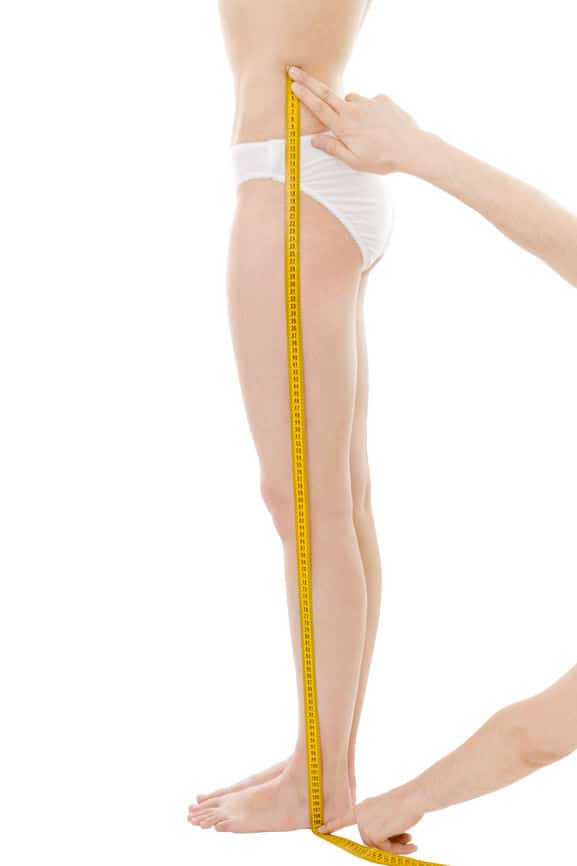

Even when studying the human body’s structure as a child, we learn that our entire body is interconnected. Such are the lyrics of the old song: “The hip bone is connected to the thigh bone; the thigh bone is connected to the knee bone…” When it comes to the right leg differing in length from the left, the issues that can arise clearly demonstrate this connectivity. Since massage therapists are well-schooled in the details of where and how different tissues join together, the back pain that results from a discrepancy between leg lengths comes as no surprise to most bodyworkers.
Virtually all practitioners within physical medicine agree that the quadratus lumborum (QL) is a vitally important muscle for pelvic stability, structural alignment and functional efficiency. According to Doctors David Simons and Janet Travell, the QL “may be the most overlooked source of low back pain.” As one of the most common reasons people seek massage therapy, low back pain can have an infinite number of causes. Therefore, a bodyworker must evaluate each client’s history, symptoms and body mechanics to assess the QL for delivering a targeted and effective massage session.
Leg Length Discrepancies
When it comes to low back pain, discovering a difference in leg length can help practitioners identify the root cause of a client’s discomfort. However, a therapist must first distinguish between a structural leg length discrepancy and a functional leg length discrepancy. A bodyworker’s ability to address their client’s pain depends upon this distinction:
- Structural Leg Length Discrepancy – Also called a true leg length discrepancy, a structural discrepancy is due to an actual length difference between the right and left femur or tibia. While usually congenital, surgeries, accidents or previous fractures can also produce a structural leg length discrepancy. A true structural discrepancy is often treated with a heel lift or, if severe enough, surgery. Administered by a licensed professional, the most accurate way to identify a structural problem is with an X-ray that allows for a bone measurement comparison of both legs. If an X-ray comparison is not an option, measuring the bony landmarks of each leg with a tape measure can reveal a structural problem. However, the least accurate, but most common way to assess a leg length discrepancy is visually.
- Functional Leg Length Discrepancy – Although more common than a structural discrepancy, realizing the cause of a functional leg length discrepancy can be difficult to determine. Occurring when one leg appears longer than the other, without a significant difference in the leg bone length, a functional leg length discrepancy is due to postural distortion. When appropriately administered, massage therapy can correct many types of postural distortions.
Upon seeing someone with lower back pain caused by a functional leg length discrepancy, postural evaluation can reveal if the QL requires release.
Postural Evaluation: Leg Length
When muscles attempt to compensate for a weakness or tightening of one area, a muscular imbalance in another location typically results. Postural distortion is the body’s mechanical method of protecting and compensating for an injury. Unfortunately, this distortion off the body’s natural balancing point sets the individual up for further muscle strains, contractions and even more pain. Correcting a postural distortion that causes a functional leg length discrepancy can be a long-term solution for chronic lower back pain. Determining an imbalance between leg lengths is just one portion of evaluating posture.
Once a structural leg length problem is ruled out, massage therapists must rely on their palpatory and visual skills to assess a leg length discrepancy. By assessing the relative levels of a client’s anterior superior iliac spines (ASIS) and medial malleoli, a practitioner can reveal a leg length discrepancy from a tight quadratus lumborum (QL) in these positions:
- Supine –When detected in the supine position, leg length differences often are the result of iliosacral rotation and/or contracted lumbar muscles. One indication of a contracted QL is for the hip to be higher and the leg to appear shorter on that side.
- Upright – Upon standing up, weight is placed on the lower extremities which can change an iliosacral rotation. However, bearing weight by standing will not change a leg length discrepancy if it is caused by a tight QL muscle. One indication of a contracted QL is for the pelvis to appear higher on that side when standing upright.
Once a tight QL is discovered to be behind a functional leg length discrepancy and subsequent low back pain, a massage therapist is well-equipped to free this muscle. Recognized by The American Academy of Pain Management as one of the most effective types of bodywork for relieving lower back pain, neuromuscular therapy can release the QL and restore symmetry to a client’s posture. To accomplish this goal, neuromuscular therapy involves the application of static pressure and applied stretching to specific myofascial points. By relying on neuromuscular therapy techniques for releasing the QL, the chronic structural deviation that spawned a leg length discrepancy can be corrected. In addition, neuromuscular therapy relaxes the low back, which can stop the cycle of chronic pain.
Identifying a difference between right and left leg lengths is only the first step in connecting this anomaly with a contracted low back muscle. Only after ruling out a structural short leg and isolating the QL as the muscle causing low back pain, can a bodyworker confidently attempt to deliver targeted relief to their client.
Recommended Study:
Chronic Pain Management
Low Back Pain
Neuromuscular Therapy & Advanced Deep Tissue











